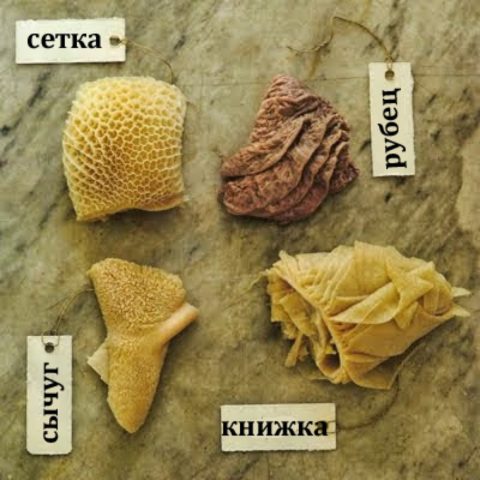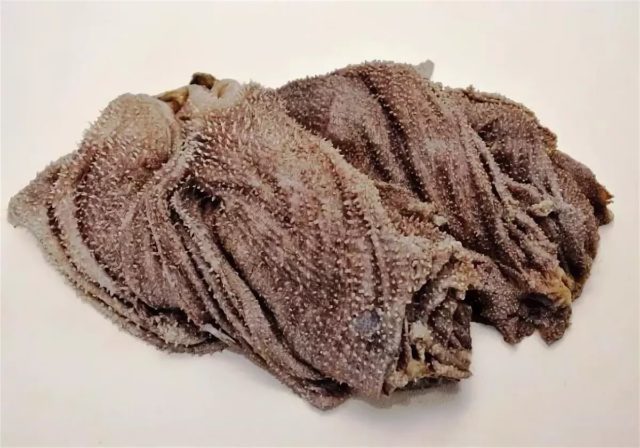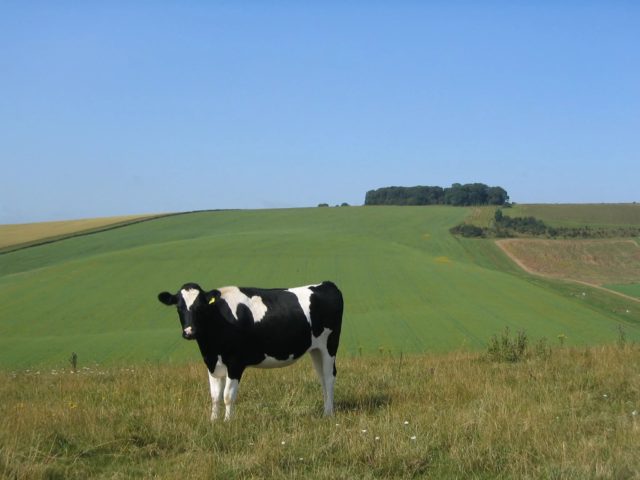Content
Bovine occlusion is a non-communicable disease in ruminants. Appears after the overflow of interleaf cavities with solid food particles, sand, clay, earth, which subsequently dry out and harden in the book, forming its obstruction.
What is a cow's book
The cow's book in the photo will help you imagine what this section of the animal's stomach looks like.
A cow's stomach has 4 chambers:
- scar;
- grid;
- book;
- abomasum.
The scar consists of several muscle layers, divided by a groove into two parts. It is located in the abdominal cavity, on the left. This is the largest section of the cow's digestive tract. Its capacity is about 200 liters. It is in the rumen that food first of all gets into. This section is filled with microorganisms that carry out primary digestion.
The mesh is much smaller in volume, located close to the diaphragm in the chest area. The net's job is to sort the feed. Small parts of food from here go further, and large ones are belched into the mouth of the cow for further chewing.
After the net, small pieces of feed are moved into the booklet. Here, a more thorough chopping of food takes place. This is possible due to the special structure of this department. Its mucous membrane consists of certain folds that resemble leaves in a book. Hence the department got its name. The book is responsible for the further digestion of food, coarse fiber, absorption of fluids and acids.
The abomasum is supplied with glands capable of secreting gastric juice. The abomasum is located on the right. It works very actively in calves that feed on milk. It immediately enters the abomasum, and the book, like the rest of the stomach, in the calf does not work until the beginning of the use of "adult" feed.
Where is the cow's book
The booklet is the third section of the stomach of cattle. It is located between the mesh and the abomasum dorsally from them, that is, closer to the back, in the right hypochondrium. The left part is located closer to the scar and mesh, the right one is adjacent to the liver, diaphragm, costal surface in the region of 7-10 ribs. The volume of the department is about 15 liters on average.
This position of the book sometimes complicates research. As a rule, they are carried out using percussion (tapping), auscultation (listening) and palpation of the organ.
On auscultation of a healthy cow, soft noises are heard, which become more frequent and louder when chewing.
Palpation is carried out by pressing the fist on the intercostal space and observing the behavior of the animal.
Percussion in a healthy animal does not cause a painful reaction, while a dull sound is heard, which depends on the filling of the stomach with food.
The reasons for the blockage of books in cattle
Normally, in a healthy cow, the contents of the book are moist and thick. With the development of blockage, it becomes denser and has impurities. This happens in situations where the cow has received a lot of dry feed, uncleaned from sand and earth, whole or crushed grain without enough moisture. An unbalanced diet, grazing on poor-quality, scarce pastures leads to the fact that the animal consumes roots with the remnants of the earth along with dry grass. This leads to blockage of the organ. Also, the book may not work for a cow with insufficient exercise and during the second half of pregnancy.
Solid, dry food, entering the book, accumulates in the interleaf niches, disrupting blood circulation and causing inflammation and blockage. The accumulated food debris quickly hardens and dries out, since water is sucked out of the food in this part of the stomach.
There are a number of other reasons for book blockage:
- injuries caused by the ingress of a foreign body;
- lack of trace elements;
- helminths;
- blockage of the intestines.
During the transfer of calves to self-feeding, similar digestive problems can occur in young animals. The calf's book is clogged for the same reasons as in an adult: the lack of succulent feed in the diet, insufficient water intake, roughage uncleaned from the soil.
Symptoms of a blockage of a book in a cow
In the first hours after the blockage, the cow has a general malaise: weakness, lethargy, decreased appetite and chewing gum disappears.
One of the first signs that a cow has a clogged book is a decrease in rumen contractions. During auscultation, the murmurs will be weak, by the second day they disappear completely. Percussion will reveal the soreness of the organ when tapped. Bowel movements are weakened and the cow may have stool retention. Often cows with a blockage drop significantly milk yield.
A significant overflow of food, blockage of the book causes thirst in the animal, an increase in body temperature, and an increase in heart rate. The cow may moan, gnash its teeth. In some cases, convulsions begin, the animal falls into a coma.
Why is a cow's book jammed dangerous?
At the very beginning of the blockage, the cow has leukopenia (a decrease in the number of leukocytes in the blood), then neutrophilia develops (an increase in the content of neutrophils). The disease can last up to 12 days. If during this time the cow is not provided with qualified assistance, the animal dies from intoxication and dehydration.
What to do if a cow has a book clogged
First of all, in case of blockage, the cow should be isolated from the herd, since she needs rest and a special regime of housing.
Therapeutic measures should be aimed at liquefying the contents of the book, as well as further promoting food along the digestive tract. Next, you should normalize the function of the scar, achieve the appearance of belching and chewing gum.
Most often, the following treatment regimen is prescribed when a book is blocked in a cow:
- about 15 liters of sodium sulfate;
- 0.5 l of vegetable oil (injected through a probe);
- flaxseed decoction (drink twice a day);
- sodium chloride with caffeine is injected intravenously.
When injected into a book, the needle is inserted under the 9th rib. Before that, 3 ml of saline should be injected into it and immediately pumped back. In this way, it is determined whether the correct injection site has been chosen.
If the pathology is also observed in the rumen, then rinsing with warm water or a manganese solution should be carried out and the animal should be given laxatives.
During the period of treatment of the blockage, it is necessary to provide the cow with plenty of drink, and restrictions on concentrates will also be useful. You need to add more juicy feed to the diet. It will be possible to switch to the main food in 2-3 weeks. Walking in the fresh air is important, but without active movement.
If a problem with the digestive tract occurs in calves, then you should rely on the experience of a veterinarian. Treatment should be prescribed by a specialist. As a rule, for calves it will be similar, but the dosage of drugs is less.
The digestive system in cattle is arranged in a special way, even more so in calves.With the transition to full-fledged feeding, all parts of the digestive system start up in the baby and the microflora changes. The blockage of the book can occur due to the characteristics of a young organism, as well as in case of errors in nutrition.
When the first signs of blockage appear, you need to isolate the calf in a separate room, do not feed, relieve the spasm, for example, no-shp, call a veterinarian.
Prevention of clogging of books in a cow
After the cow's book is cleared and the veterinarian prescribes a treatment regimen, the owner needs to revise the rules for feeding and keeping the animal. Food should not be monotonous and contain only bulk feed. Waste from technical production must be pre-steamed, mixed with juicy feed. In addition, it is important to enrich the feed with vitamin supplements and microelements. Animals should be provided with regular, daily outdoor walks.
Cows must have constant free access to clean drinking water. If there is water mixed with silt in the place of walking, in the pasture, it is necessary to deliver water from the farm and pour it into containers.
Conclusion
A blockage of the book in a cow is a serious disease of the digestive tract. With a careful attitude to the animal, a well-composed diet, daily exercise, blockage of the book can be avoided.











